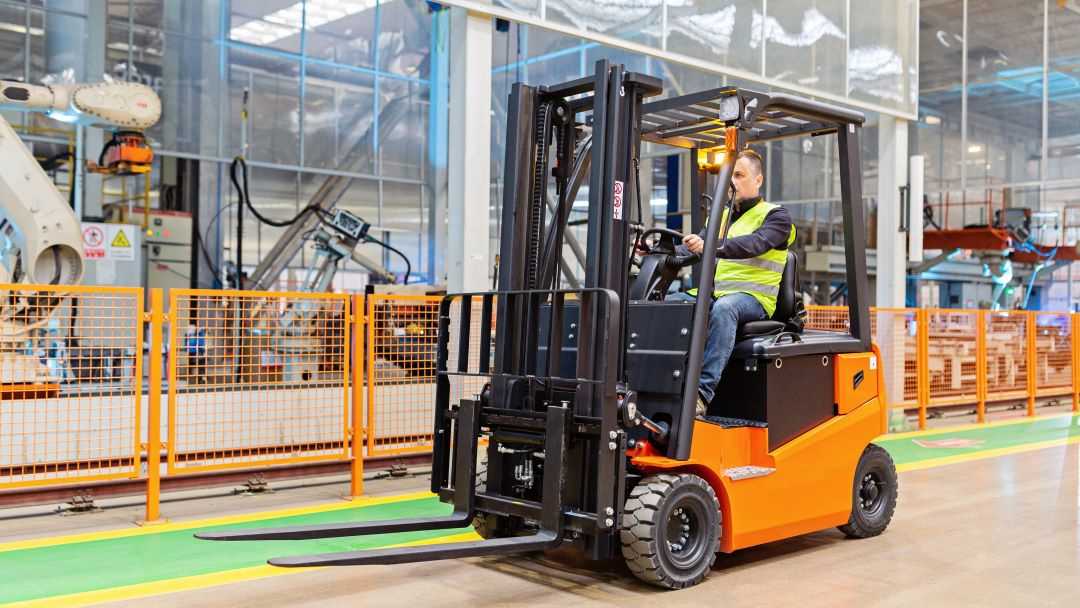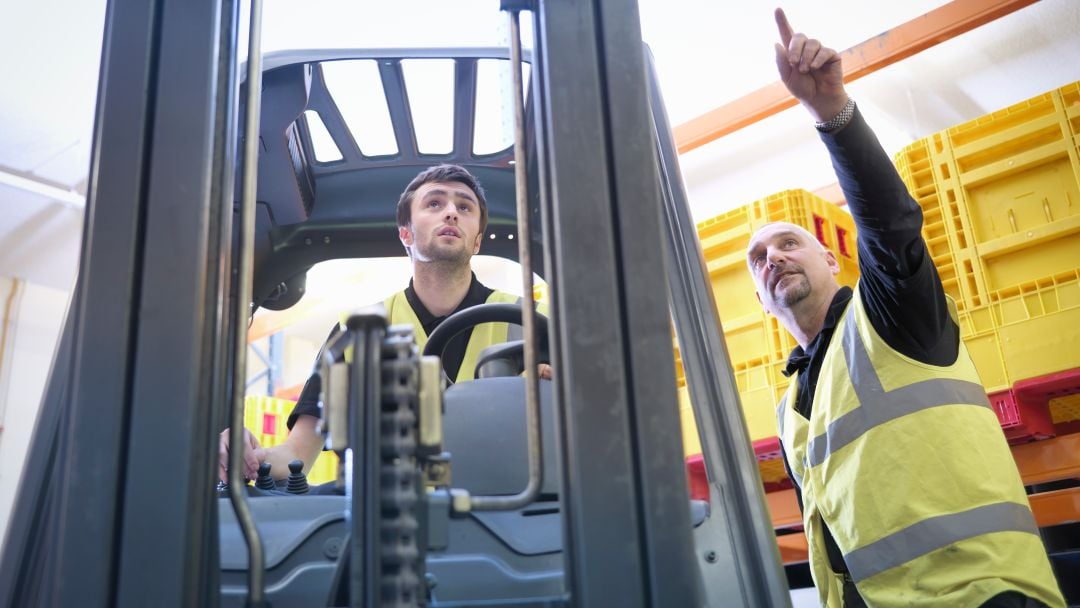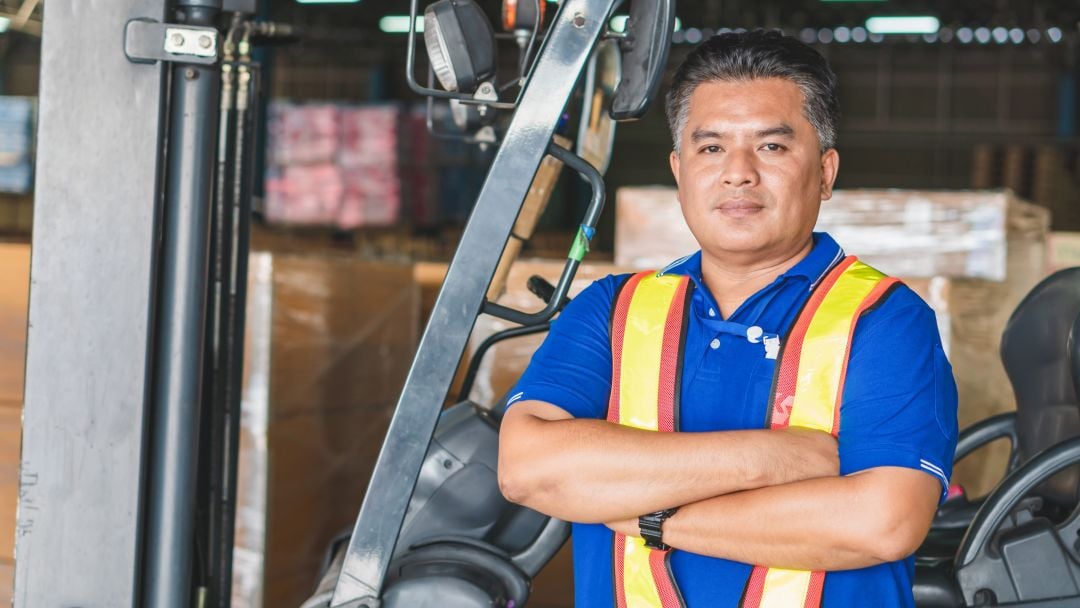Powered industrial trucks, or PITs, what are they?
Commonly called forklifts or lift trucks, powered industrial trucks (PITs) are used in many industries primarily to move materials. They can also be used to raise, lower, or remove large or smaller objects on pallets or in boxes, crates, or other containers. PITs can either be ridden by the operator or controlled by a walking operator.
Forklift classifications
The Occupational Safety and Health Administration (OSHA) recognizes seven classes of PITs. The classifications depend on load capacity, power type (electric versus internal combustion), and the application for which the PIT is used (for example, indoors versus outdoors, or warehouses versus lumber yards).
While there are many different types of forklifts within these classes, we’ll be taking a look at the top seven most common PITs. The different types of PITs in our list fall into classes I, II, or III.
- Class I – These electric motor rider trucks have a load capacity of anywhere from 2,500 pounds to 12,000 pounds. They are typically used indoors in manufacturing facilities and warehouses.
- Class II – These are electric motor narrow-aisle trucks. As the name implies, they’re commonly used indoors in large storage warehouses, especially ones with high shelves and narrow aisles. They generally have a load capacity of 1,500 pounds to 5,500 pounds.
- Class III – This class is for electric motor hand trucks or hand/rider trucks. They’re often used indoors and in loading areas. Their load capacity can range from 2,000 pounds to 10,000 pounds.
Clamp dock stockers
Class I - Clamp dock stockers, also known as clamp trucks, are specialized forklifts equipped with clamps that enable them to securely handle materials that may be difficult to lift with traditional forks. Clamp attachments are great tools for moving bulky items and irregularly shaped objects. These clamps can easily adjust to accommodate various sizes and types of loads, ensuring a secure grip when transferring material.
Sit-down forklifts
Class I - Sit-down forklift with slip sheet attachment have push/pull slip sheets that are thin, durable platforms used in logistics to replace pallets for transporting goods. They reduce costs, save space, and improve efficiency by allowing forklifts to push or pull loads.
Class I - Counterbalanced riders are also known as sit-down forklifts. These forklifts are commonly used for tasks such as transporting, loading, unloading, and stacking pallets in various settings (indoors and outdoors). Sit downs can carry up to 6,500 pounds and lift as high as 23 feet. The operator controls are a steering wheel, accelerator, and brake pedal. These forklifts are beneficial when it comes to large operation and are generally easier to learn how to operate.
Very narrow aisle forklifts
Class II - Very narrow aisle (VNA) forklifts, also known as turret forklifts, are specialized forklifts designed for operations in areas with extremely tight aisle spaces, typically less than six feet wide. These forklifts are equipped with a rotating mast or turret that allows the forks to rotate 180 degrees in either direction, enabling the operator to retrieve or deposit pallets with ease. This capability enhances operational efficiency, particularly in high-density warehouses where maximizing storage space is essential.
Order selectors (cherry pickers)
Class II - Order selectors are also known as cherry pickers, stock pickers, or order pickers. These are mainly used for material handlers to pick and transport items from shelves or pallet racking in distribution centers.
Order pickers are electric-powered. The operator stands on a platform and will be latched onto a harness that connects to the overhead metal guard. The operator uses a control panel or joystick to move the unit forward, backward, and side-to-side. When the operator reaches the desired location, they use the control panel or joystick to raise or lower the platform and pick up the item by hand.
Depending on the business, some order pickers operate on roller or wire guidance. One of the biggest advantages of order pickers is that they can work in very narrow aisles, 6 feet wide or less.
Reach trucks
Class II - A reach truck is a type of stand-up forklift. These forklifts have a scissor mechanism that allows the operator to extend and retract the forks. The unique dock-to-stock capability makes it one of the most versatile forklifts. It is designed for 5,000-pound loads, is more flexible, and can handle more capacity at greater heights with added durability. Its compact design allows it to seamlessly navigate narrow aisles with ease.
Electric motor rider (electric pallet jack)
Class III - Electric motor rider, also known as EPJ or electric pallet jack, is a simple yet powerful method of moving material. The truck can be operated while standing on a platform and has the following controls: speed, lift and lower of forks, a T-bar support, and a horn.
Currently, there are more than 1,500,000 forklift operators in the U.S.
Taking the next steps as a forklift or PIT operator with Employbridge
The journey to becoming a PIT operator requires mastery of the equipment and prioritizing safety protocols. If you’re ready to get started on your path to becoming a PIT operator, Employbridge is here to help. We support job seekers by offering opportunities for growth and advancement. Learn more about forklift operator skills and abilities for career advancement or how to get forklift certified.
With flexible employment options, comprehensive life and career skills courses, and strong industry relationships, Employbridge empowers individuals toward professional and career development. You can explore all of our job opportunities or contact us today to learn more.


